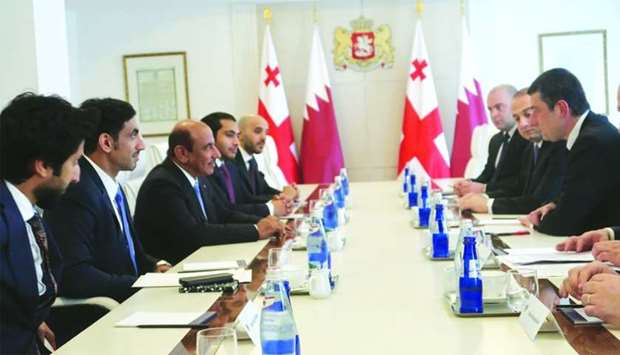Climate’s ‘Catch-22’: Cutting pollution heats up planet

Air pollution, a global scourge that kills millions of people a year, is shielding us from the full force of the sun. Getting rid of it will accelerate climate change.
That’s the unpalatable conclusion reached by scientists poring over the results of China’s decade-long and highly effective “war on pollution”, according to six leading climate experts.
The drive to banish pollution, caused mainly by sulphur dioxide (SO2) spewed from coal plants, has cut SO2 emissions by close to 90% and saved hundreds of thousands of lives, Chinese official data and health studies show.
Yet stripped of its toxic shield, which scatters and reflects solar radiation, China’s average temperatures have gone up by 0.7 degrees Celsius since 2014, triggering fiercer heatwaves, according to a Reuters review of meteorological data and the scientists interviewed.
“It’s this Catch-22,” said Patricia Quinn, an atmospheric chemist at the US National Oceanic and Atmospheric Administration (NOAA), speaking about cleaning up sulphur pollution globally. “We want to clean up our air for air quality purposes but, by doing that, we’re increasing warming.”
The removal of the air pollution — a term scientists call “unmasking” — may have had a greater effect on temperatures in some industrial Chinese cities over the last decade than the warming from greenhouse gases themselves, the scientists said.
Other highly polluted parts of the world, such as India and the Middle East, would see similar jumps in warming if they follow China’s lead in cleaning the skies of sulphur dioxide and the polluting aerosols it forms, the experts warned.
They said efforts to improve air quality could actually push the world into catastrophic warming scenarios and irreversible impacts.
“Aerosols are masking one-third of the heating of the planet,” said Paulo Artaxo, an environmental physicist and lead author of the chapter on short-lived climate pollutants in the most recent round of reports by the Intergovernmental Panel on Climate Change (IPCC), completed this year.
“If you implement technologies to reduce air pollution, this will accelerate — very significantly — global warming in the short term.”
The Chinese and Indian environment ministries didn’t immediately respond to requests for comment on the effects of pollution unmasking.
The link between reducing sulphur dioxide and warming was flagged by the IPCC in a 2021 report which concluded that, without the solar shield of SO2 pollution, the global average temperature would already have risen by 1.6 degrees Celsius above preindustrial levels.
That misses the world’s goal of limiting warming to 1.5C, beyond which scientists predict irreversible and catastrophic changes to the climate, according to the IPCC, which pegs the current level at 1.1C.
The Reuters review of the Chinese data provides the most detailed picture yet of how this phenomenon is playing out in the real world, drawing on previously unreported numbers on changes in temperatures and SO2 emissions over the past decade and corroborated by environmental scientists.
Reuters interviewed 12 scientists in total on the phenomenon of unmasking globally, including four who have acted as authors or reviewers of sections on air pollution in IPCC reports.
They said there was no suggestion among climate experts that the world should let-up on fighting air pollution, a clear and present danger that the World Health Organisation says causes about 7mn premature deaths a year, mostly in poorer countries.
Instead they stressed the need for more aggressive action to cut emissions of climate-warming greenhouse gases, with reducing methane seen as one of the most promising paths to offset pollution unmasking in the short term.
President Xi Jinping pledged to tackle pollution when he took power in 2012 following decades of coal-burning that had helped turn China into “the factory of the world”. The following year, as record smog in Beijing inspired “Airpocalypse” newspaper headlines, the government unveiled what scientists called China’s version of the US Clean Air Act.
On March 5, 2014, a week after Xi went on a walkabout during another extreme bout of smog in the capital, the government officially declared a war on pollution at the National People’s Congress.
Under the new rules, power plants and steel mills were forced to switch to lower-sulphur coal. Hundreds of inefficient factories were shuttered, and vehicle fuel standards toughened up. While coal continues to be China’s largest power source, smokestack scrubbers now strip out most SO2 emissions.
China’s SO2 emissions had decreased from a 2006 peak of at nearly 26mn metric tons to 20.4mn tons in 2013 thanks to more gradual emissions restrictions. But with the war on pollution, those emissions had plummeted by about 87% to 2.7mn metric tons by 2021.
The drop in pollution was accompanied by a leap in warming — the nine years since 2014 have seen national average annual temperatures in China of 10.34C, up more than 0.7C compared with the 2001-2010 period, according to Reuters calculations based on yearly weather reports published by the China Meteorological Administration.
Scientific estimates vary as to how much of that rise comes from unmasking versus greenhouse gas emissions or natural climate variations like El Nino.
The impacts are more acute at a local level near the pollution source. Almost immediately, China saw big warming jumps from its unmasking of pollution near heavy industrial regions, according to climate scientist Yangyang Xu at Texas A&M University, who models the impact of aerosols on the climate.
Xu told Reuters he estimated that unmasking had caused temperatures near the cities of Chongqing and Wuhan, long known as China’s “furnaces”, to rise by almost 1C since sulphur emissions peaked in the mid-2000s.
During heatwaves, the unmasking effect can be even more pronounced. Laura Wilcox, a climate scientist who studies the effects of aerosols at Britain’s University of Reading, said a computer simulation showed that the rapid decline in SO2 in China could raise temperatures on extreme-heat days by as much as 2C.
“Those are big differences, especially for somewhere like China, where heat is already pretty dangerous,” she said.
Indeed, heatwaves in China have been particularly ferocious this year. A town in the northwestern region of Xinjiang saw temperatures of 52.2C (126F) in July, shattering the national temperature record of 50.3C set in 2015.
Beijing also experienced a record heatwave, with temperatures topping 35C (95F) for more than four weeks.
The effects of sulphur unmasking are most pronounced in developing countries, as the US and most of Europe cleaned up their skies decades ago. While the heat rise from sulphur cleanup is strongest locally, the effects can be felt in far-distant regions. One 2021 study co-authored by Xu found that a decrease in European aerosol emissions since the 1980s may have shifted weather patterns in Northern China.
In India, sulphur pollution is still rising, roughly doubling in the last two decades, according to calculations by NOAA researchers based on figures from the US-funded Community Emissions Data System.
In 2020, when that pollution plummeted due to Covid lockdowns, ground temperatures in India were the eighth warmest on record, 0.29 C higher than the 1981-2010 average, despite the cooling effects of the La Nina climate pattern, according to the India Meteorological Department.
India aims for an air cleanup like China’s, and in 2019 launched its National Clean Air Programme to reduce pollution by 40% in more than 100 cities by 2026.
Once polluted regions in India or the Middle East improve their air quality by abandoning fossil fuels and transitioning to green energy sources, they too will lose their shield of sulphates, scientists said.
“You stop your anthropogenic activities for a brief moment of time and the atmosphere cleans up very, very quickly and the temperatures jump instantaneously,” added Sergey Osipov, a climate modeller at the King Abdullah University of Science and Technology in Saudi Arabia.
As the implications of the pollution unmasking become more apparent, experts are casting around for methods to counter the associated warming.
One proposal called “solar radiation management” envisions deliberately injecting sulphur aerosols into the atmosphere to cool temperatures. But many scientists worry that the approach could unleash unintended consequences.
A more mainstream plan is to curb methane emissions. This is seen as the quickest way to tame global temperatures because the effects of the gas in the atmosphere last only a decade or so, so cutting emissions now would deliver results within a decade. Carbon dioxide, by comparison, persists for centuries.
As of 2019, methane had caused about 0.5C in warming compared with preindustrial levels, according to IPCC figures.
While more than 100 countries have pledged to reduce methane emissions by 30% by the end of the decade, few have gone further than drawing up “action plans” and “pathways” to cuts. China — the world’s biggest emitter — has yet to publish its plan.
By targeting methane, the world could mitigate the warming effect of the reduction in pollution and potentially avert catastrophic consequences, said Michael Diamond, an atmospheric scientist at Florida State University.
“This doesn’t doom us to going above 1.5 degrees Celsius if we clean up the air.”








